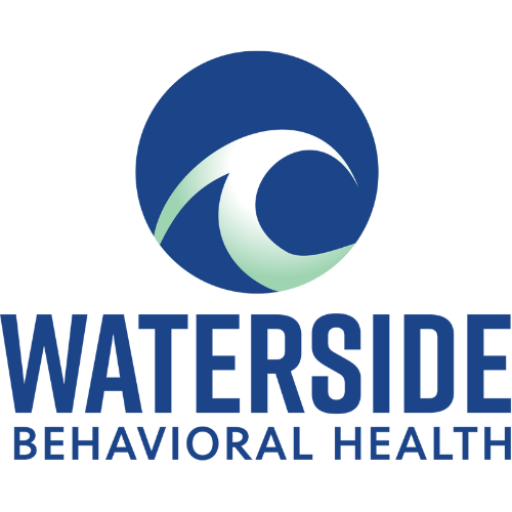Meds for PTSD: Effective Treatment Options and Considerations
Meds for PTSD are a helpful tool for those suffering from PTSD. Living with PTSD can feel overwhelming, and finding the right treatment is crucial. Many people with PTSD find relief through medications that help manage their symptoms. There are proven medications available, such as SSRIs and SNRIs, which have been shown to reduce anxiety and improve mood.
Medication isn’t the only solution, but it can ease symptoms and help those with PTSD and Trauma better engage in therapy. Learning about the types of medications, their benefits, and potential side effects is important in making informed decisions about treatment.
Consulting with a healthcare provider is essential. They can guide patients through their options and tailor a plan that best suits individual needs. This can be a key step in getting back to a fulfilling life.
Understanding PTSD
Post-Traumatic Stress Disorder (PTSD) impacts mental health after experiencing or witnessing a traumatic event. Knowing the symptoms and what increases the chances of developing PTSD can help people recognize and address the condition. Many people have found relief using meds for PTSD.
Symptoms and Diagnosis
PTSD symptoms vary widely but usually include reliving the traumatic event. This can happen through flashbacks or nightmares. Individuals might avoid places or things that remind them of what happened. They might also feel emotionally numb or detached.
Other symptoms include increased arousal, such as difficulty sleeping, irritability, or difficulty concentrating. Diagnosing PTSD typically involves a mental health professional conducting a detailed assessment. They consider the presence of these symptoms for over a month and how much they affect daily life. Prompt and accurate diagnosis is crucial for effective treatment.
Prevalence and Risk Factors
PTSD is not uncommon. It’s estimated to affect millions worldwide. In the U.S., about 3.5% of adults experience PTSD in a given year. It’s more common in women.
Key risk factors include having experienced severe trauma, such as military combat or physical assault. Other contributors include a history of mental illness, lack of support after trauma, or additional stressors like losing a loved one. Understanding these factors aids in identifying who might be more vulnerable to PTSD.
First-Line Meds for PTSD
Medications often play a vital role in managing PTSD symptoms. Certain drugs, like SSRIs and SNRIs, are most commonly used due to their effectiveness.
Selective Serotonin Reuptake Inhibitors (SSRIs)
SSRIs are a primary choice for treating PTSD. They help increase serotonin levels in the brain, which can improve mood and reduce anxiety. Common SSRIs include sertraline and paroxetine. These medications are approved by the FDA specifically for PTSD treatment.
SSRIs can ease core symptoms, such as recurring thoughts and emotional numbness. Patients might start noticing changes in a few weeks, though it usually takes several months for full benefits. Minor side effects might include nausea and dizziness, which often lessen over time.
Serotonin-Norepinephrine Reuptake Inhibitors (SNRIs)
SNRIs are another effective option for PTSD. They target both serotonin and norepinephrine pathways in the brain. A well-known SNRI used for PTSD is venlafaxine.
This class of drugs can help with persistent symptoms like irritability and hyper-vigilance. SNRIs may require several weeks to show improvement, similar to SSRIs. Possible side effects include increased blood pressure and tiredness, but they vary among individuals. Proper monitoring ensures better outcomes and helps manage any side effects.
Alternative and Adjunctive Treatments
While traditional medications are common for PTSD, some people look to other treatments. These can help when used with other strategies or alone. Oftentimes, those suffering from substance abuse disorders also suffer from PTSD. Therefore, several alternative treatments are available for different situations.
Atypical Antipsychotics
Atypical antipsychotics might help when regular treatments aren’t enough. These include risperidone and quetiapine. They can reduce symptoms like intrusive thoughts and anxiety. These drugs can work well for individuals who do not respond to antidepressants alone.
Side effects like weight gain and sedation should be monitored. Careful use and regular check-ups with a doctor are important. They are not typically the first choice but can be effective in certain cases.
Anticonvulsants and Mood Stabilizers
Medications like valproate and lamotrigine are considered for PTSD treatment. These mood stabilizers can help with irritability and mood swings associated with PTSD.
Research suggests they provide additional benefits when paired with other treatments. Careful management is needed to avoid side effects like dizziness or sleep issues. They offer potential alternatives when typical treatments don’t suffice.
Beta-Blockers and Alpha-1 Antagonists
Propranolol, a beta-blocker, and prazosin, an alpha-1 antagonist, may reduce stress responses. Propranolol works by reducing physical symptoms like heart palpitations. Some people may find relief from nightmares and sleep disturbances.
Prazosin is especially noted for managing nightmares in PTSD patients. Regular follow-up with a healthcare provider ensures proper dosing. These medications offer a different route for symptom management, especially related to anxiety and sleep.
Non-Pharmacological Interventions
Non-drug treatments for PTSD include talk therapies and alternative methods. They can provide relief for many symptoms and help improve the quality of life for people dealing with trauma.
Psychotherapy
Psychotherapy is a key method for treating PTSD without medication. Cognitive Behavioral Therapy (CBT) is often used. It helps people change negative thought patterns. Exposure therapy is another approach. It encourages people to face their trauma in a safe space, decreasing fear over time. Eye Movement Desensitization and Reprocessing (EMDR) uses guided eye movements to help the brain process traumatic memories.
Therapists might also use group therapy, letting individuals share experiences and learn from others. These methods aim to empower those with PTSD to manage symptoms, lead healthier lives, and reduce distress.
Complementary and Alternative Medicine
Complementary and Alternative Medicine (CAM) includes practices not typically part of Western medicine. Mindfulness-based stress reduction, yoga, and meditation are popular choices. They focus on the mind-body connection and can reduce stress and anxiety. Acupuncture is sometimes used to relieve physical symptoms linked with PTSD.
Art therapy, dance, and music therapy offer creative outlets for expressing emotions. Herbal treatments and supplements, like St. John’s Wort, are sometimes used, but their effectiveness varies, and they should be discussed with a healthcare provider. These interventions provide holistic support, addressing both emotional and physical aspects of PTSD.
Pharmacotherapy Challenges and Considerations
Meds for PTSD can face obstacles like treatment resistance, unwanted side effects, and varying impacts on different populations. Each factor needs to be carefully weighed in order to provide effective treatment.
Treatment-Resistant PTSD
Treatment-resistant PTSD occurs when symptoms do not improve even after trying multiple medications. This can be frustrating for patients and healthcare providers. They may need to explore different medication types or consider combining medications.
Factors like genetic differences and underlying health conditions can contribute to this resistance. Research is ongoing to understand these factors better. Psychotherapy often works alongside medications to improve outcomes. Some patients might need to try newer or less traditional treatments if relief isn’t found with common drugs.
Medication Side Effects
Side effects can vary widely between individuals and can affect treatment choices. Common side effects include nausea, drowsiness, and changes in appetite or weight. These effects may cause patients to stop taking the medication prematurely.
Healthcare providers need to monitor patients closely to adjust dosages or switch medications if side effects become severe. They may offer strategies to manage or reduce these effects. Some patients might find that side effects lessen over time, while others may continue to experience discomfort.
Special Populations
Certain groups, like children, older adults, and pregnant individuals, may face unique challenges with PTSD medications. For children, careful consideration is needed to prevent negative impacts on development. Drug interactions and the body’s ability to process medication differently in older adults require attention.
Pregnant individuals need careful monitoring, as some medications might affect the unborn child. Healthcare providers must weigh the benefits against potential risks. Adjusting the treatment plan to suit the needs of these populations is critical to ensuring safe and effective care.
Frequently Asked Questions
Medications for PTSD often include FDA-approved options and first-line treatments like SSRIs. Other medications help manage symptoms, including nightmares or anxiety. New research is ongoing in this field.
What are the FDA-approved meds for PTSD treatment?
The FDA has approved certain medications to help treat PTSD. These include sertraline (Zoloft) and paroxetine (Paxil). Both are selective serotonin reuptake inhibitors (SSRIs) and are commonly prescribed for anxiety and depression symptoms.
What is considered first-line medication for treating PTSD?
First-line medications for PTSD often involve SSRIs like sertraline and paroxetine. These drugs are typically used first due to their effectiveness and safety profile. They help alleviate symptoms such as anxiety, depression, and mood swings.
How can PTSD symptoms be effectively managed or alleviated?
PTSD symptoms can be managed with a combination of medication and therapy. SSRIs and SNRIs are common drug treatments. Cognitive Behavioral Therapy (CBT) and Eye Movement Desensitization and Reprocessing (EMDR) are therapeutic techniques often used along with medication.
Are there new developments in the treatment of PTSD?
There is ongoing research into new developments in PTSD treatment. Some studies explore the use of MDMA-assisted therapy and new antidepressants. Continuous research aims to improve existing treatments and discover new approaches.
Which medications are most commonly prescribed for PTSD-related nightmares?
Prazosin is a medication often prescribed for PTSD-related nightmares. It is an alpha-blocker that can help reduce the frequency and intensity of these dreams. It is not FDA-approved for PTSD but is commonly used off-label for this purpose.
What are the best antipsychotics to use for PTSD patients, if any?
Antipsychotics are not typically the first choice for PTSD but may be used for severe cases. Medications like risperidone have been studied, though their effectiveness varies. These drugs may be considered when other treatments are not sufficient.




